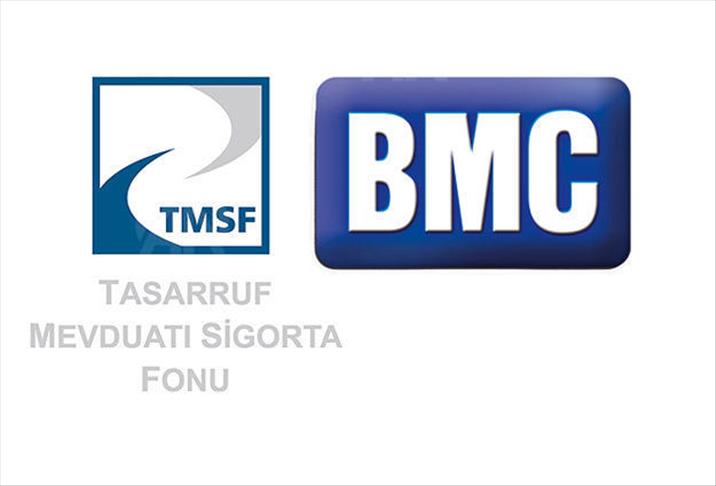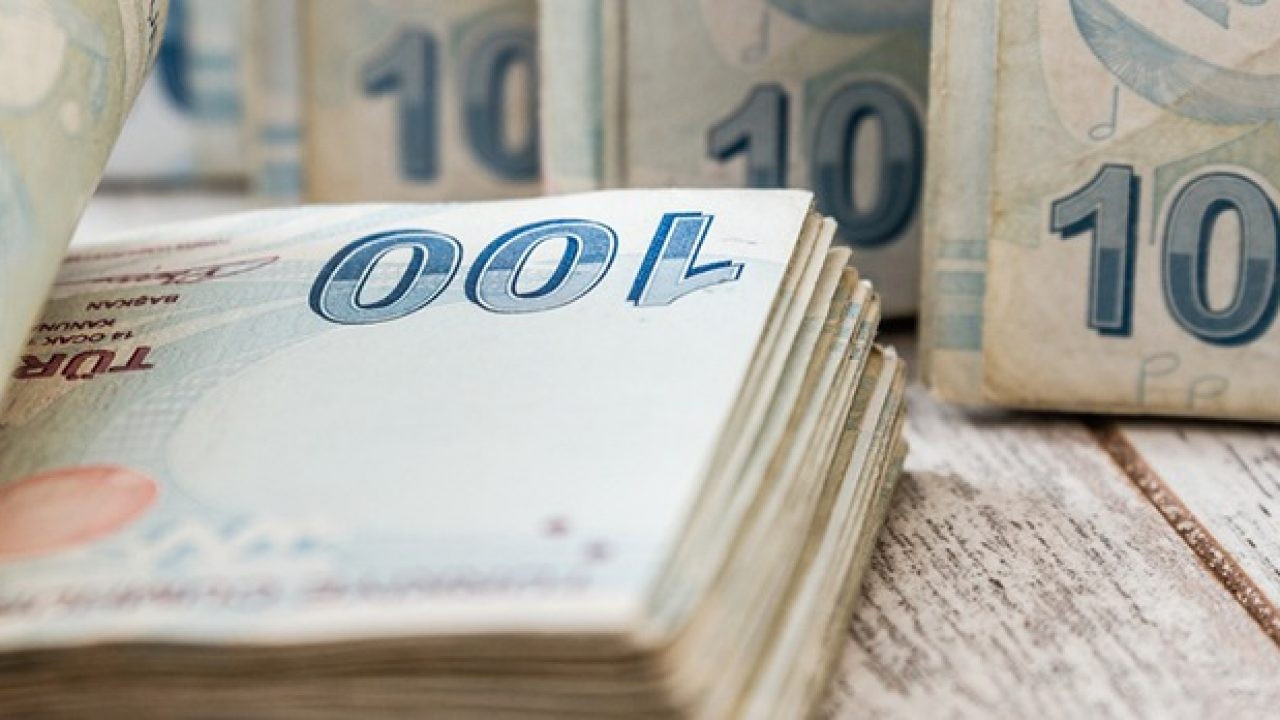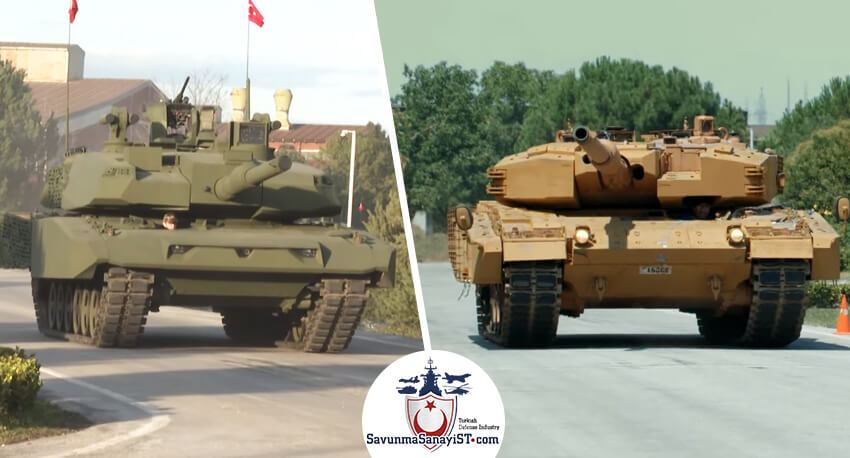I tried using oppositon free media
TMSF'nin Çukurova Holding'ten yönetimini devraldığı ağır ve zırhlı araç üreticisi BMC'nin satış ihalesinde tek teklif, 725 milyon lira ile iş adamı Sancak'ın sahibi olduğu ES Mali Yatırım ve Danışmalık AŞ'den geldi. - Anadolu Ajansı

www.aa.com.tr
Sancak was the only one to give offer during purchase tender. He also stated Qatari intention to invest. Sancak bought BMC around 700 million liras in 2014. Shortly after purchase sold Qatari investors 49.9 percent of shares for said to be few hundred million dollars.
According to the first AA.com.tr source, Ethem Sancak already was in talks with the Qatari investors. That meant that Sancak was going to share the risk of acquiring BMC with his Qatari partners. This suggests that Sancak had a plan and a roadmap with his Qatari investors as suggesting by this quote from AA source: “Cuma günü, bu teklifimiz onaylanırsa hayırlısıyla BMC’yi alacağız. Sonra da niyetimiz bu kuruma asgari 500 milyon dolar yatırım yaparak bir global küresel marka haline dönüştürmektir. Bu potansiyel bu kurumda var.”
This suggests that Sancak and his Qatari partners already had made the plan to invest another 500 million USD into BMC. This most likely means that the Qatari investment was used to invest in BMC itself. Ethem Sancak stated in his interview that I had posted in my previous post, where he said that he invested 300 million USD in BMC’s Izmir plant. Their Karasu plant is in construction, this shows that BMC’s investors are still investing in BMC and its long term vision is to grow (as evidenced by all the projects it is running as well). However, Qatari’s part during the tender does raise the question, whether half of the 750 million TL paid to TMSF was paid by the Qatari’s or not. I assume the Qatari’s didn’t pay half of 750 million TL, but can’t say that for sure. Because of all the investments in BMC, I think Qatar’s sum paid for 49% went to BMC proper, and not to TMSF. If it is the latter, then it's probable that both Qatari’s together with Sancak’s money went into the BMC investments.
This coupled with BMC’s ‘super tesvik’ projects. BMC actually has 4 super tesvik’s, not just the engine one. All of this suggests that BMC is very ambitious, it seems like BMC is looking to become something like Siemens, Hitachi or Caterpillar of Turkey.
Grants, incentives from government to develop infrastructure has to be public. They have to have a report on where the money went and performance report.
View attachment 25436
BMC Otomotiv'in Sakarya'ya yapılacak dizel motor, transmisyon ve alt sistemleri üretim tesisi yatırımı, proje bazlı devlet yardımı kapsamına alındı. - Anadolu Ajansı

www.aa.com.tr
"Yatırım için 585 milyon liralık sabit yatırım miktarı öngörülüyor. 600 kişilik ilave istihdam sağlayacak yatırımda 24 nitelikli personel görev yapacak.
Yatırım süresi sonunda yılda 35 bin dizel motor, transmisyon ve alt sistem üretimi öngörülüyor.
BMC'nin yatırımı KDV istisnası, gümrük vergisi muafiyeti,
KDV iadesi, kurumlar vergisi indirimi (vergi indirim oranı yüzde 100, yatırıma katkı oranı yüzde 72, yatırıma katkı tutarının yatırım döneminde kullanılabilecek oranı yüzde 100), sigorta primi işveren hissesi desteği (azami tutar sınırı olmaksızın 10 yıl), gelir vergisi stopajı desteği (10 yıl), nitelikli personel desteği (azami 69 milyon lira), faiz desteği ve/veya kar payı desteği (141 milyon lirayı aşmamak üzere kredi kullanım tarihinden itibaren azami 10 yıl), enerji desteği (işletmeye geçiş tarihinden itibaren 10 yıla kadar 12 milyon lirayı aşmamak üzere enerji tüketim harcamalarının yüzde 50'si)."
BMC isn’t the only company that gets super tesvik. But regarding this topic, it seems the government is giving BMC, at least the engine one according to the link you provided, no subsidies or grants. The link you provided states: “"Yatırım için 585 milyon liralık sabit yatırım miktarı öngörülüyor. 600 kişilik ilave istihdam sağlayacak yatırımda 24 nitelikli personel görev yapacak…” then it goes on the details about the incentives.
I am pretty sure the 585 million TL isn’t coming from the state, but it is an investment coming from BMC itself. Because in the paragraph after next, the sentence starts with “BMC’nin yatırımı KDV istisnasi…” suggesting that it is going to be BMC itself doing the investing/funding. Now I could be wrong here but it seems that BMC is funding its own project. If it does turn out that the state is funding the engine project and pays the 585 million TL to BMC, I personally don’t mind. It is a small price to pay for strategic independence. We see on this forum how BMC’s engine’s are coming along nicely, so far BMC is on schedule to deliver what was promised.
My understanding of the ‘super tesvik’ program was that “invest in these areas, and you will get incentives like tax cuts, etc”. This is what I understood of it when I first heard about super tesvik and is still my understanding of it today. This is further supplemented if I look at Ford Otosan’s super tesvik: 20.5 billion TL is going to be invested in the Kocaeli plant in which the focus will lie on exporting the vehicles manufactured there. I don’t think Ford Otosan is going to get 20.5 billion TL from the government as that is quite a substantial number, instead Ford Otosan will invest its own resources into its own plant in Kocaeli, once it is done it will be able to benefit from the super incentives as stated in the program.
Now I am sure in some of these 34 super tesvik projects there is state funding involved if I were to look hard enough, but I wouldn’t mind it in such a case. Here’s why:
My opinion on these ‘super tesvik’ programs is that it is one of the best things, if not the best thing that came out of the government. Coupled with Organize Sanayi bolgeleri (OSB), the goal of achieving 3% or higher of the GDP going to R&D. There are a few more I can’t recall right now.
Super tesvik started off with 20 projects, I am glad to say that it got expanded to 34 projects. All these projects are within areas of strategic importance. Some of them are directly in line to combat current account deficit (cari acik), while others contribute towards strategic independence (like in the energy field, or defence industry). The projects within the super incentive program range between industries. There are projects within the transportation, health, defence, food, agriculture, automotive, chemicals industry etc.
Here is an update about the state of various super tesvik programs and how long they will take:
DÜNYA, toplamı 115 milyar lirayı bulan proje bazlı teşvik sistemi kapsamındaki yatırımları araştırdı. Yüksek teknoloji ve stratejik alanlarda dev bütçe gerektiren 34 projede üretim süreci farklı seyrediyor.

www.dunya.com
Why Qataris, private investors are involved with BMC Power if it is funded by Turkish government? Rights all of the engines belong to SSB. Since its government funded why I can't find info. My tax money.
We can't find info because either the info is out there but we simply can't find it, or the government/state deemed it necessary not to share that info for whatever reason, these are military projects we are talking about. But then again, I am sure there are loads of faaliyet raporlari out there that are public to us, but yet none of us would have the patience to read.
I don’t know if all the rights of the engine’s belong to SSB or not, Altay’s engine probably belongs to SSB as there was a tender for it but I don't know what was agreed to between BMC and SSB. But the other engine’s are likely BMC’s own initiative. But all of BMC's engine's are part of the super incentive program I believe.
BMC is a company (whether its private or public), with investors. These investors can be Turkish, Qatari, Chinese, English, etc. There is no point in discriminating against investors. Grundig is owned by Koc group (if it hasn’t changed, haven’t checked for a while), even though it’s main investor is Turkish (foreign) it is still a German company (indigenous). Having foreign investors doesn’t make a company foreign or local.
View attachment 25437
Linkedin page of TRMOTOR, probably wasn't updated. Why was BMC Power, company with no experience in aircraft engines was tried being included as the largest stakeholder? Isn't TRMOTOR government funded project? Qatar brothers going to invest billions to us for fighter jet engine.
TRMotor is a government project, but since there are multiple entities within the company, then it's probable that (some) of the funding comes from the companies involved. All companies involved are there for a reason, they all bring something to the table, whether its know-how, resources, funding, etc. The specifics I don’t know, but I am sure the people involved know the in’s and out’s and act accordingly. And if Qatari’s feel like an investment is going to pay off, then they can invest in whatever they want, if the counterparty allows this of course. This is not only true for Qatari’s but all investors in general.
How this business model supposed to work? Do they make their money after sale? Do they like sell software updates for the features to the bus buyers? We are talking about vehicles that have to be as with low maintenance. Buses, trucks get used for 10+ years. Top income is transport tenders such as the buses. Even with high market share company could go bankrupt that is not even with the competition considered.
What I wrote was not a business model by the way, it is a strategy as to how you place yourself in the market as opposed to the competition, a goal for short, medium or long term (depending on what stage the company is in and current market share). There is maintenance and spare parts etc. involved. That is one aspect. Boeing (iirc) makes more money from spare parts than final products. But that is not what I meant by becoming a market leader. As a company, once you have the largest market share, then that means your company has certain advantages over the competition, it also makes it easier to price products in order to make profit or at the very least adjust the price as a defensive measure so that competitors have a harder time competing against you. A large size allows for a company to take advantage of ‘economies of scale’, when costs are spread over a large number of goods and products. It allows the company to buy out the small competition if they wish to do so. It’s sheer size as market leader allows it to just lean on its competition, instead of very actively competing. Being market leader brings many advantages in relation to one’s competition. And yes, even a market leader position comes with risks and disadvantages too, like disruptive technologies and trends (Tesla for instance forced the automotive industry to adapt), but there is always risk in doing business.
Otokar or FNSS needed much less investment to start producing tanks. Also infrastructure just for serial production is not enough. Company needs to have R&D capabilities to improve the tank. Last up armored Altay wasn't the serial production variant. BMC's capabilities are far lacking in this area, especially tracked vehicles, it's one of the reason why they did a very bad job coming up with products to compete despite the backing. Even Tank palette factory had better R&D capabilities in tracked vehicles than BMC.
I don’t know about all that, maybe for FNSS, but Otokar doesn’t have a production line for tracked vehicles as far as I know. But even so, FNSS would still need to invest in a production line for Altay. If we look at the tender, BMC was the one that gave the lowest offer after all and it was already in the process of investing into its infrastructure as evident from the first AA source, in which it was stated they were planning to invest 500 million USD into BMC. The R&D talent from Altay (when it was at Otokar) migrated to BMC according to Sancak in his interview (around the 29 minute mark in my previous post).
However I would be doing a disservice to FNSS and Otokar, because I don’t know the internal calculations of these respective companies when they were giving their offer. Besides that BMC has the advantage of its investors (this is speculation on my part, based on the strategy that I tried to explain in my few posts in this thread).
I did not say armored vehicles. BMC did not expand its military vehicle family until 2016s. Main product for military was Kirpi and trucks at the time. BMCs main income was from civilian sector. Buses, trucks etc. Companies military products wasn't enough to make it lucrative investment.
Even before Ethem Sancak, BMC made the leap into military vehicles. BMC was already delivering Kirpi trucks to the army when it was still Cukurova holding. It delivered 295 Kirpi’s before TMSF took BMC over:
https://web.archive.org/web/2016010...armoured_vehicles_to_turkish_army_290314.html
If BMC had stayed a healthy company then I am pretty sure it would’ve expanded into other military vehicles. You already got the know-how of armour, and other military technology. It would’ve been a waste of know-how to only keep producing Kirpi’s and not expanding your product range within the military segment.
There is no guarantee in investing and doing business. Only risk mitigation and planning for contingencies. You invest in the potential but make an exit plan or mitigation plan in the case it doesn't work out.












